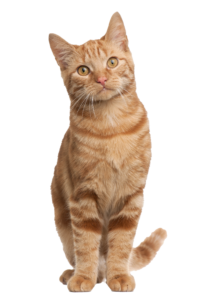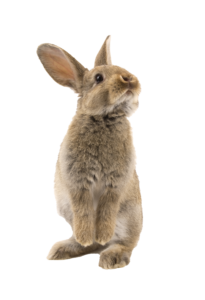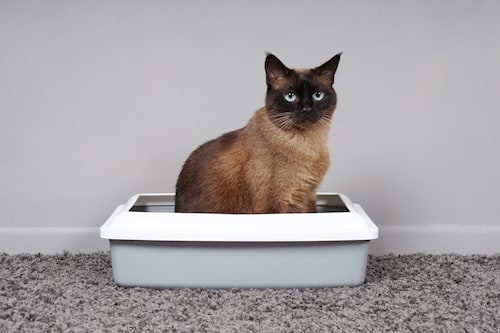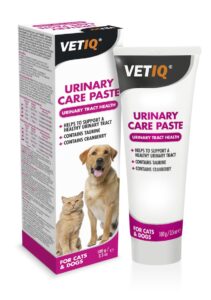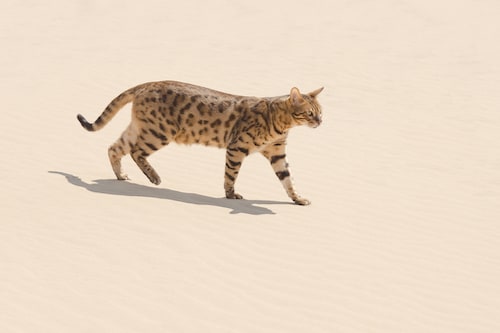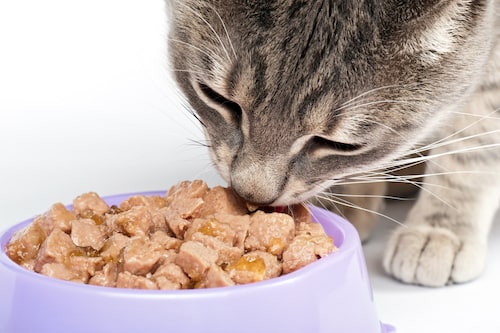Urinary problems are fairly common amongst cats, it’s likely that your veterinarian or another cat owner has already warned you about them.
So it’s important for every cat owner to take some time to educate themselves about the types of cat urinary problems that might occur and, even more importantly, how to prevent them and keep our furry friends healthy.
Cat Urinary Problems
Unfortunately, the urinary troubles that a cat may face during his or her lifetime aren’t limited to a single disorder. Instead, there’s a group of illnesses that the pros refer to as feline lower urinary tract diseases, or FLUTD for short.
FLUTD can affect either a cat’s bladder or urethra, the lower parts of the urinary tract.
More specifically, FLUTD can include:
- Bladder stones (caused by crystallisation or debris trapped in the bladder or urethra)
- Bladder infections
- Inflammation of the bladder (which you may hear called cystitis by a veterinarian)
- Obstruction of the urethra
However, FLUTD does not include other possible diagnoses related to the urinary system such as upper urinary tract infections (UTIs) or kidney stones.
What’s the difference? It’s all about the kidneys. FLUTD won’t affect a cat’s kidneys (the upper urinary tract), whereas UTIs or kidney stones will.
What to Watch For
There are plenty of symptoms that might indicate that your cat is experiencing FLUTD. Aside from generally monitoring your kitty’s litter box habits and water intake, which is always a good idea for the sake of their general health, keep the following symptoms in mind. If any of the following happen, it’s possible that a urinary problem could be at fault.
1. Timing matters.
If you notice that your cat is using the litter box infrequently or passing only very small amounts of urine at one time, there may be cause for concern. On the other hand, a cat who is urinating more frequently than usual might also be suffering from a lower urinary tract problem.
2. How they pee is important, too.
We’ve discussed the “when”, so how about the “how”? Just as important as how frequently your cat is urinating is how they urinate. For instance, you may notice that they are staying in the litter box a long time, straining to urinate, or even crying out in pain while going to the bathroom.
VetIQ Urinary Care Paste
A safe, gentle way to naturally maintain a healthy urinary tract.
3. Location, location, location.
If your cat begins having accidents outside of the litterbox or dribbling urine, this lack of bladder control is a sign that something’s up.
4. Take a look.
No, it’s not the most savoury thing in the world, but you’ll need to keep a close eye on the appearance of your cat’s urine (the “what”), too. If the urine appears cloudy or if there is any blood present in the urine, that’s a sign that you should call up your vet straight away. A strong, ammonia-like smell in the urine could indicate an issue, too.
Home and Natural Remedies
Sometimes, minor instances of cat urinary problems can be treated at home with natural remedies. A few of the most effective home remedies seem to include:
- De-stressing
Stress in a cat’s life can cause all kinds of trouble, including FLUTD. - Berries
Berries such as juniper berries and cranberries, which can do the trick to solve urinary troubles naturally. While cranberry juice or other cranberry products can often help to promote urinary health in humans, too, use a pet-branded cranberry product rather than a human one. - Certain Leaves & Roots
Leaves and roots including parsley, uva ursi, and marshmallow root, all of which have their individual benefits to tackle the risks and symptoms associated with FLUTD. - Apple Cider Vinegar
The acidity of apple cider vinegar can eliminate or reduce the presence of bacteria that lead to lower urinary tract infections.
Remember that these remedies aren’t the be-all and end-all, and they may not work for every cat.
It’s a good idea to speak with your vet before implementing any of these remedies on your own—they’ll be able to tell you whether or not these natural treatments will be sufficient or if your cat will benefit more from medication.
If you notice that your cat isn’t improving, or if your kitty is experiencing any severe symptoms, call your vet as soon as possible and get their advice. Home treatments can certainly be effective, but it’s always better to be safe than sorry when it comes to your furry family member’s well-being!
Prevention Is Key
Of course, there’s one thing better than successfully curing your feline pal of a urinary problem—preventing it in the first place.
The Importance of Water
The history of cats and their ancestry is really an incredible story. Plus, it explains in part why cats have a tendency towards urinary problems. Really, it’s as simple as the fact that cats aren’t naturally inclined to drink much water.
If you think of the urinary system like a series of tubes and filters, you won’t be far off from the truth, and it becomes much easier to understand why a flow of water can keep the system clean and in tip-top shape.
However, cats’ ancestors were primarily mammals who lived in the desert, where survival was necessary even without constant access to water. While your house cat may not live in the desert, he still has some of the instincts of his ancient ancestors!
To encourage cats to drink plenty of water, promote frequent urination, and thereby reduce the risk of crystal build-up or other urinary problems, create good water-drinking habits. Place multiple food bowls throughout the house, keep water fresh and at room temperature, and fill the bowls to the brim.
All About the Diet
Because cats can acquire a large amount of their water from eating wet foods or having broths added to their diet, it’s never a bad idea to ensure that your cat is eating a balanced amount of wet and dry foods.
Every little bit of added fluid helps!
Between prevention, home remedies, and vet care, every cat owner has the ability to reduce the risks of FLUTD and other urinary problems in their cats.
VetIQ Urinary Care Paste
A safe, gentle way to naturally maintain a healthy urinary tract.
[/et_pb_text]
Win a pack of VetIQ Urinary Care Paste for your cat or dog!
Error: Contact form not found.


